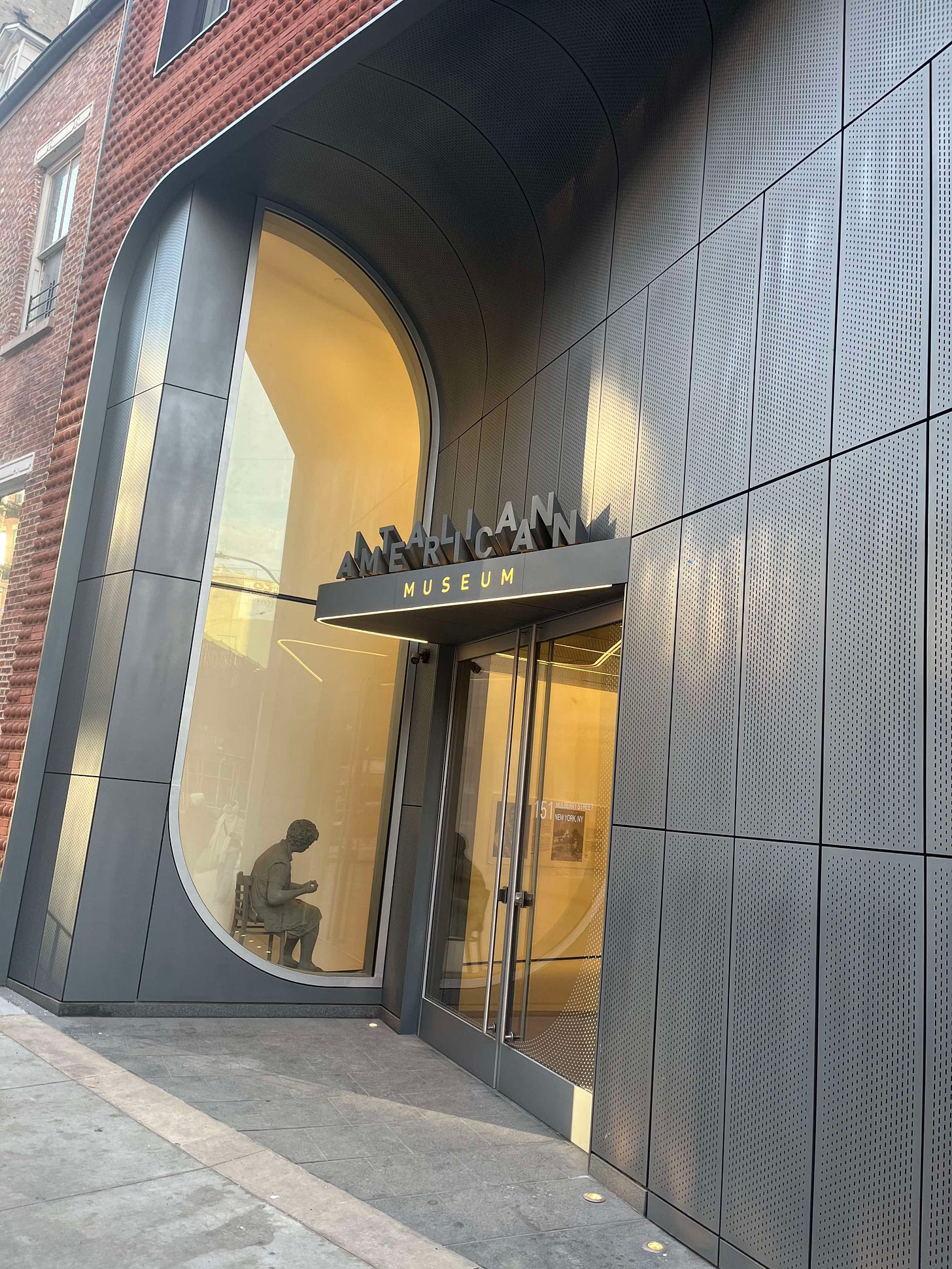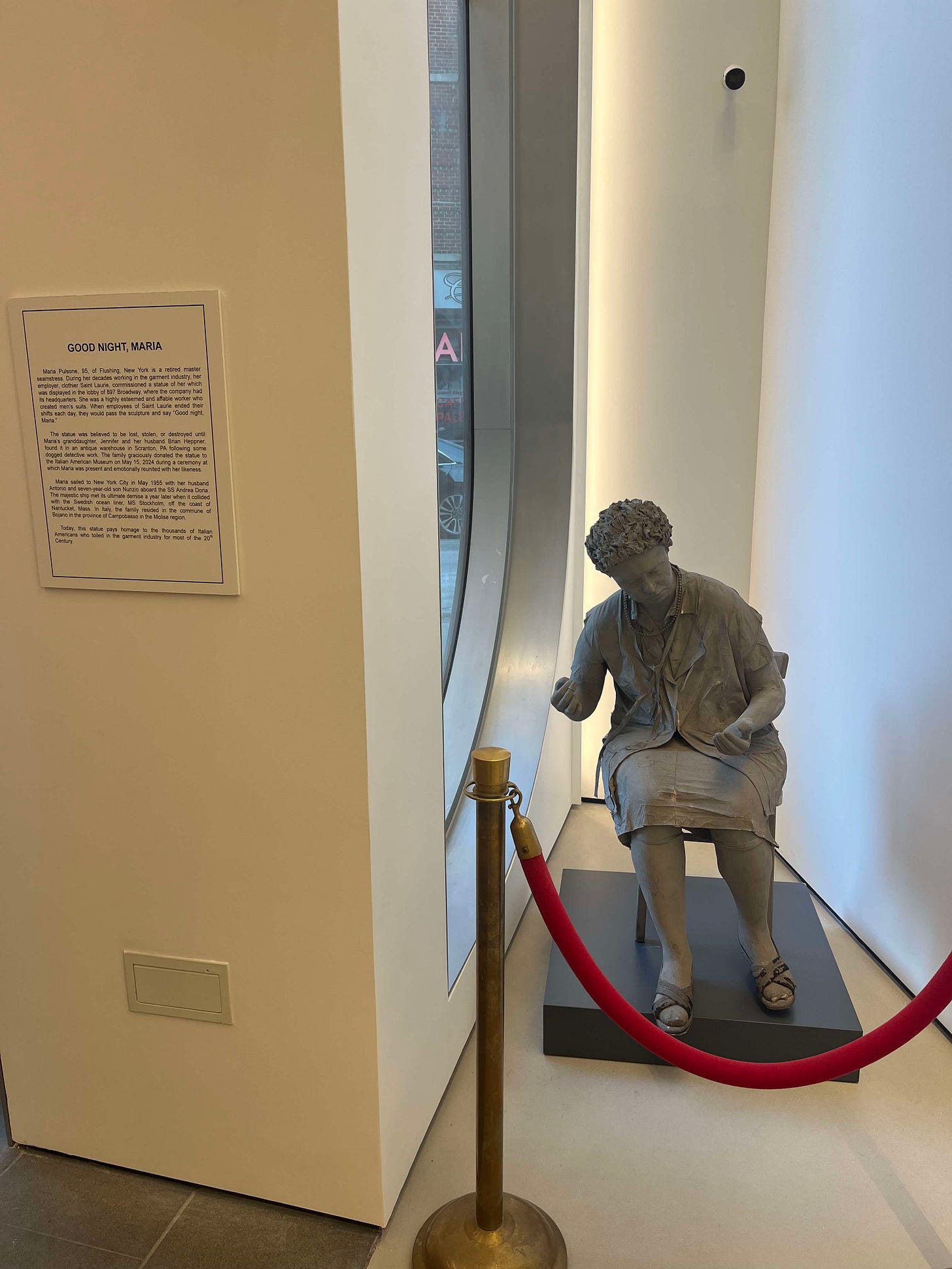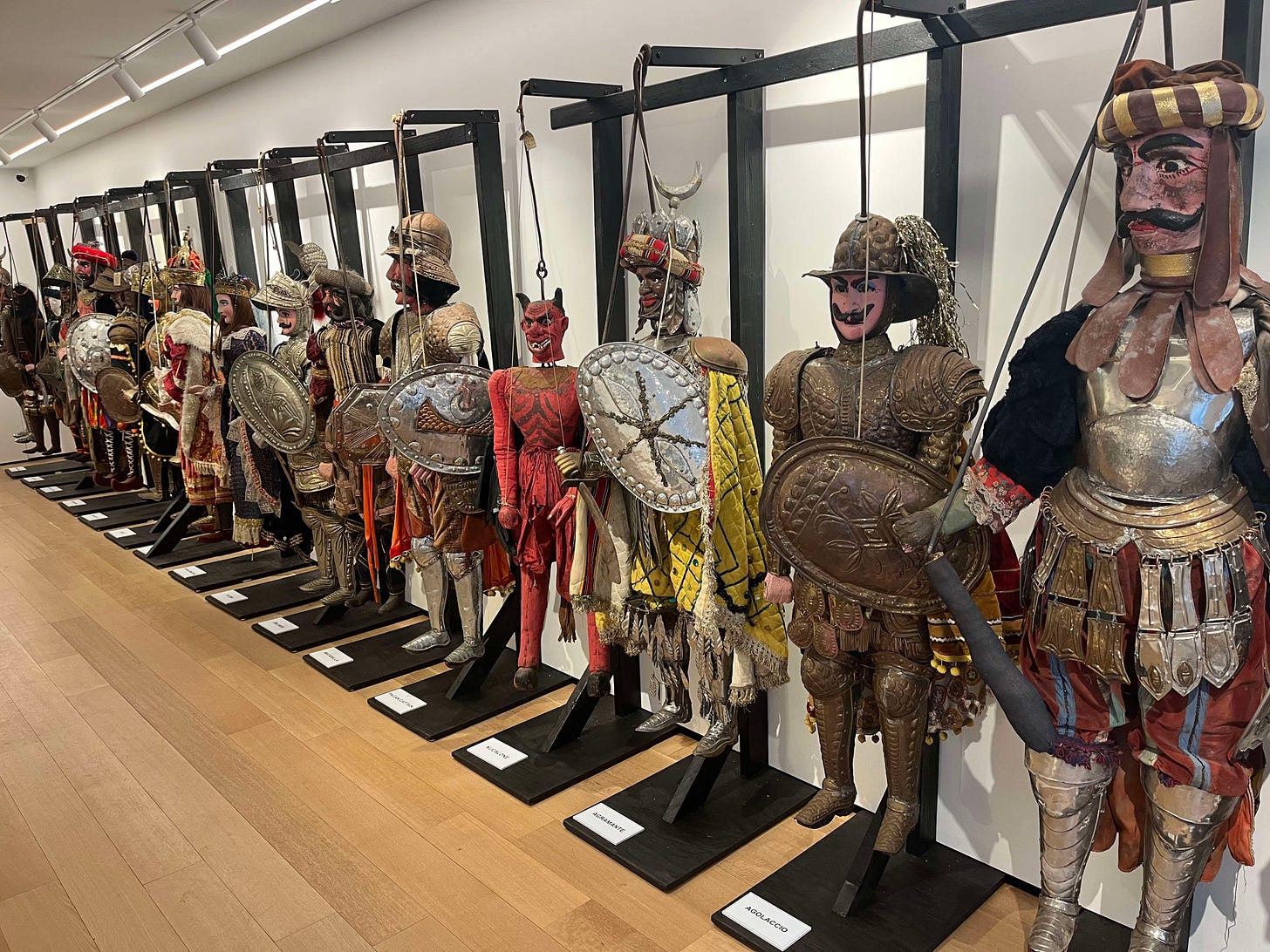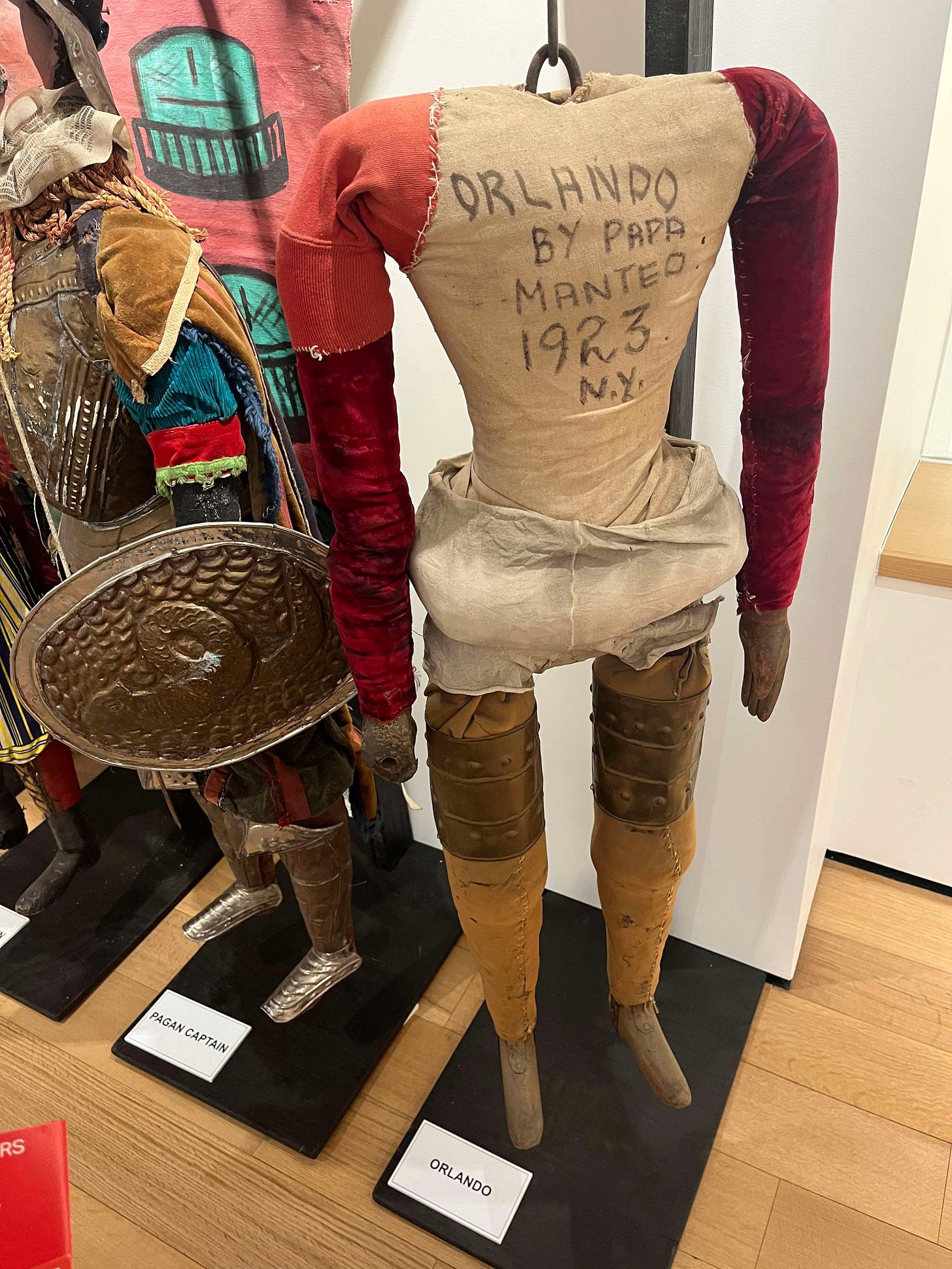The history of the neighborhood of New York City’s Little Italy is a proud one. The late 19th century saw a mass immigration of Italians to the United States, and many settled in a crowded handful of blocks in lower Manhattan. It became a cultural focal point of the city— it contained some of the poorest population at the time, but they created a lifestyle and society that was proudly distinct from anywhere else on the island of Manhattan. Today, the “official” size of Little Italy has shrunk by more than half, but Mulberry St still remains a proud bastion of Italian culture, food and art for its residents and many visitors.
The founders of the Italian American Museum were inspired by a 1999 exhibtion at the New York Historical Society on “The Italians of New York: Five Centuries of Struggle and Achievement”. They were officially chartered by New York State in 2001, and have hosted a variety of events and pop-up exhibitions in various spaces, but it is only in this year that their brick-and-mortar location is opening on historic Mulberry Street.
One of the first things you see upon entering the museum is the Good Night, Maria statue— a statue which the clothier Saint Laurie commissioned of one of his seamstress employees, Maria Pulsone, to commemorate her decades of service on his line of men’s suits. The plaque informs us that when the employees of Saint Laurie left the building every day they would pass the statue and say “Good night, Maria.”
On one wall of the entrance lobby was an exhibition on poster board about Giovanni da Verrazzano— an explorer of the “new world” in the time of Christopher Columbus, who is actually believed to be the first to reach the shores of what is today the northeastern United States/New England. The Verrazzano-Narrows bridge is named in his honor.
The Italian American Museum actually doesn’t officially open until this summer, this is more of a soft opening, so they’ve only got one exhibition space fully open, which is showing Sicilian Theater in Little Italy: The Return of the Manteo Puppets.
The Manteo family emigrated to the United States in the early 20th century and, like many Italian families, settled in Little Italy. They were determined to bring the Sicilian style of puppetry and puppet performances to the people of New York City, and the entire family became dedicated to building, maintaining, and performing these puppets in traditional stories from their home.

The guide took care to emphasize to me how the puppets were all built by hand, and primarily from scrap fabrics and metal(for the armor) which the family meticulously sewed and sculpted.
The guide told me that the puppets are very highly valued— after the Manteo family officially retired in the 90s both the Jim Henson Corporation and the National Archives reached out about purchasing the puppets. The Manteo family maintained that the puppets should always have a home on Mulberry street, and so would give their art to no one but the Italian American museum, who now displays them with great pride.
Though the geographical area of Little Italy has shrunk over the years, the impact of Italian culture on the city of New York and the United States as a whole is indelible. It’s so good that there’s a space now that is dedicated to delving into that culture beyond the pizza and delis that most people know, to examine in depth the art and the histoy that embodies all those that identify as Italian American.
ADMISSION: $15.00
GIFT SHOP: No
BATHROOM: Yes
WHEELCHAIR ACCESSIBLE: Yes
UPCOMING MUSEUMS
Feb 8: King Manor Museum
Feb 15: Korean Cultural Center
Feb 22: Kingsland Homestead
Mar 1: Korea Society










puppets R great